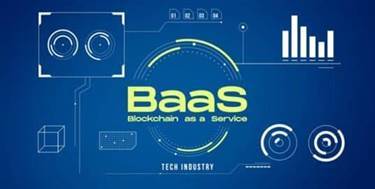Retail Logistics: Definition + Tips To Optimize Logistics for Retail
14 February 2023Supply management involves the planning, procuring, and coordination of materials that are needed in a certain location at a specific time to support production. This logistics will also involve coordination for the storage and transportation of the materials. It also means evaluating the level of supply to match demand to make sure that the process has a smooth flow.

Logistics experience refers to the quality and efficiency of the delivery process of a product or service. It involves the ability of a company to deliver the product or service to the customer’s desired location within the expected time frame, while ensuring that the product arrives in good condition and with minimal disruptions. Goods need to be delivered efficiently and seamlessly while adhering to road safety rules and set time deliverables.
Retail Supply Chain Management 101
Demand planning also predicts future revenue generation opportunities and helps gain insights into market trends. It helps to plan resources to meet demand and supply gaps as and when required. Inventory planning ensures that proper stock quantities are maintained to meet customer demand while minimizing the costs related to storage. Inventory planning helps provide accurate order fulfillment, a well-organized https://globalcloudteam.com/ warehouse, increased productivity, and savings in terms of time and money. Product management in logistics involves planning, management, and control of the different stages of production within a company. It takes care of the coordination required in the manufacturing or assembling process, movement between factories and warehouses, managing of production spaces, and sticking to a strict schedule.
- Establish a “crisis team” to ensure preparedness in the event of any logistics emergency.
- Inbound logistics is based on the relationship between businesses and suppliers.
- Fierce competition in today’s market has forced business enterprises to invest in and focus on supply chains.
- As a knowledge base lets customers and employees quickly find answers, it can boost an organization’s customer satisfaction score…
- Retail logistics is a vital aspect of the supply chain that companies use to maintain healthy relationships with their customer base.
Logistics works optimally when there are ample transparency and visibility in operations. An efficient logistics management plan can analyze historical data and provide route optimization to increase efficiency and reduce fuel costs. Logistics management can optimize the utilization of assets, improve business efficiency and reduce operational costs. Demand Planning is the process of analyzing, evaluating, and forecasting the demand for goods to ensure availability of products and goods that customers want to buy. It gives a business the ability to predict future sales and to have sufficient inventory levels to meet customer needs, without having a surplus stock.
Support warehouse stocking
As the various human civilizations tried to build the best possible works of construction for living and protection. In the past few years, construction logistics has emerged as a different field of knowledge and study within the subject of supply chain management and logistics. Contract logistics is the outsourcing of resource management tasks, such as transportation and warehousing, by one company to a third-party company.
UK logistics players call for more detail as more Brexit customs rules … – theloadstar.com
UK logistics players call for more detail as more Brexit customs rules ….
Posted: Thu, 18 May 2023 12:29:09 GMT [source]
Air is the most expensive type of transport, followed by truck, rail, pipeline, and ship. Physical metrics used to evaluate inventory systems include stocking capacity, selectivity, superficial use, volumetric use, transport capacity, transport capacity use. Disposal logistics has as its main function to reduce logistics cost and enhance service related to the disposal of waste produced during the operation of a business. Operations management is the administration of business practices to create the highest level of efficiency possible within an organization. Semiconductors are the memory modules, microprocessors, and other chips found in electronic devices and other products. Their supply chain is crucial to the economy, but since it is complex, it can be subject to disruption.
What Is 3PL? A Guide to Third-Party Logistics.
Good inventory management enables the business to decide to ship products that are performing poorly in one store or region to another rather than take a loss via discount pricing to be rid of the stock. Logistics is key to moving inventory where it is likely to get the best price. Conversely, by noting slowing inventory turns on other products, a company can better determine when to offer discount pricing or other incentives to free capital to reinvest in goods that are in higher demand. Today, the term “logistics” applies to the reliable movement of supplies and finished products. According to a Statista study, U.S. businesses spent $1.63 trillion on logistics in 2019, moving goods from origin to end-user through various supply chain network segments. By 2025, a total of 5.95 trillion ton-miles of freight will move across the United States.

Your plan should outline all the steps your company will need to take to bring your strategy to life. It’s important that your pricing be competitive for the geographic area and the industry to turn your inventory regularly and at a good margin.It is also imperative to adjust pricing—up or down—according to demand. To succeed here, companies need continuous insights into profitability ratios and unit margins. Say an item can be purchased as either a single unit or in packs of 12, which are also considered a unit. On a larger scale, a manufacturer may sell parts in a box containing a few products or as a pallet of multiple boxes. Getting quantity right demands clarity in how inventory is listed as well as proper picking and packing.
Distribution and material handling
Our hard-earned expertise, vast network and state-of-the-art software solutions make us uniquely equipped to support retail logistics, so you can focus on adapting to the latest trends and building a truly dynamic supply chain. In our vast, yet tightly interconnected world, consumers are able to purchase products from halfway across the globe and have them on their doorstep within the matter of days. The global supply chain is the engine that makes this all possible and — for companies in the retail sector — retail logistics is the key to effectively managing the flow of goods from suppliers to consumers.
Compared to traditional logistics, e-logistics handle parcels that are valued at less than a hundred US dollars to customers scattered at various destinations around the world. In e-logistics, customers’ demands come in waves, when compared to traditional logistics where the demand is consistent. It was found that the retailers were ordering, on average, more inventory than they really needed. To stay ahead, merchants take their time with this stage by implementing a winning strategy to satisfy customers. The picker is notified with details of products to be packaged and delivered as soon and cost-effectively as possible. As a knowledge base lets customers and employees quickly find answers, it can boost an organization’s customer satisfaction score…
Retail Logistics: Master Distribution in 3 Steps
At the same time they need to be able to move less demand-volatile products in an efficient and cost-effective manner. Bull – Whip Effect • Supply chain efficiency improves when vendors and retailers share information and work together. • By collaborating, vendors can plan their purchases of raw materials retail logistics software and their production processes to match the needs of retailer’s merchandise. • Thus, vendors can make sure that the merchandise is available “just in time,” when the retailer needs it, without having to stock excessive inventory in the vendor’s warehouse or the retailer’s distribution centers or stores.

This movement generally involves moving stored materials or products for further manufacturing or distribution. This kind of logistics involves a lot of loading, unloading, tracking, and keeping stock of materials. This type of management controls the movement of supplies from a central warehouse to various other locations, involving intense material movement where timely delivery is an important factor. In business, logistics may have either an internal focus or an external focus , covering the flow and storage of materials from point of origin to point of consumption (see supply-chain management). The main functions of a qualified logistician include inventory management, purchasing, transportation, warehousing, consultation, and the organizing and planning of these activities.
How to Improve Logistics Management in the Retail Industry
Efficient logistics management provides clear visibility of transportation activities involved in ensuring smooth supply chain operations. By analyzing the transportation data, companies can implement better route optimization to avoid potential disruptions and also save on operational and fuel costs. Logistical activities can be divided into three main areas, namely order processing, inventory management, and freight transportation. Traditionally, order processing was a time-consuming activity that can take up to 70% of the order-cycle time.